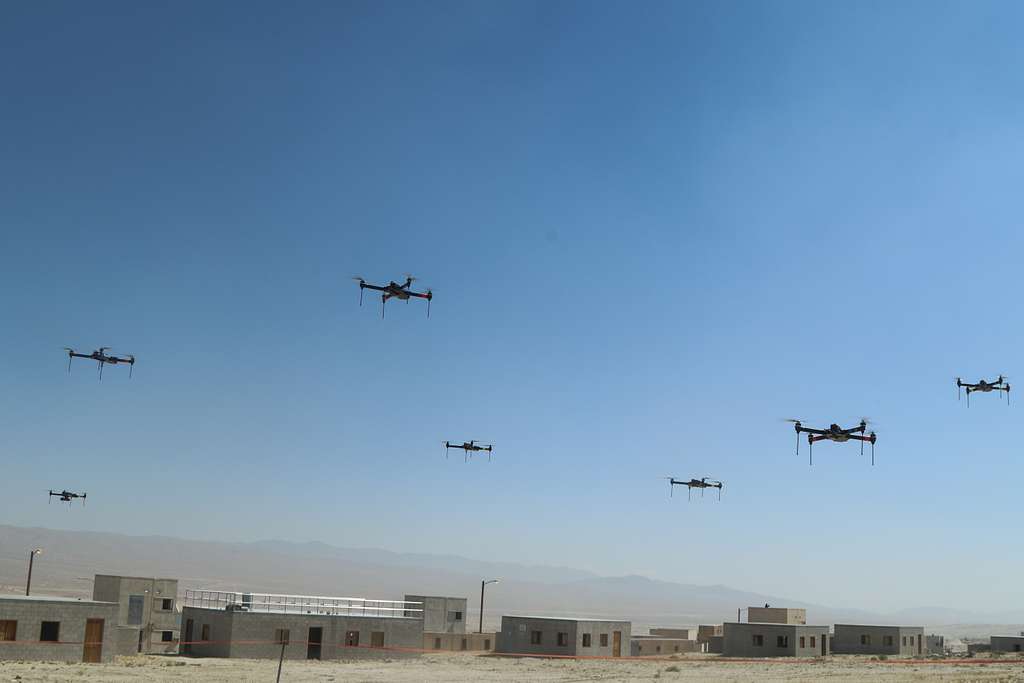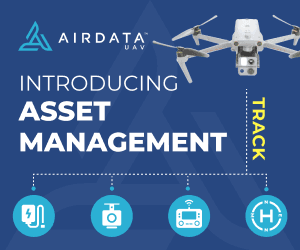Artificial Intelligence (AI) is reshaping drone technology, and its impact is comparable to the revolution of the Internet on personal computers. By giving drones the ability to make autonomous decisions, process real-time data, and collaborate in groups, AI is completely changing the way drones are used in commercial and military fields. This change is not only reflected in the technical level, but will also have a profound impact on the global industrial structure and social operation mode.

From the Internet to AI: Enlightenment of Technological Change
In the 1990s, the Internet transformed isolated personal computers into globally connected computing nodes, giving rise to new business forms such as e-commerce, social media, and remote work. This transformation is not only a technological upgrade, but also triggered a systematic change in social production methods and business models. Today, AI is bringing a similar leap to drones – upgrading from simple aerial photography tools to intelligent systems that can adapt to complex environments. This transformation also has the significance of a paradigm shift and will redefine the role and function of drones in human society.
It is worth noting that, similar to the Internet revolution, AI’s transformation of drones also presents the typical characteristics of “technology first-application follow-up-regulation lag”. This asymmetric development model has brought both innovation dividends and sown the seeds of regulatory challenges.
AI transformation of commercial drones
1. Breakthrough progress in autonomous navigation
AI-driven obstacle avoidance and path planning algorithms make beyond-visual-line-of-sight (BVLOS) flight possible. Modern SLAM (simultaneous localization and mapping) technology combined with deep learning allows drones to navigate autonomously in complex urban environments. For example, Amazon Prime Air has used AI to achieve fully autonomous logistics distribution, completing tens of thousands of drone delivery missions per day. In China, Meituan’s drone delivery system has been commercialized in cities such as Shenzhen, with an order on-time rate of more than 95%.
2. The revolution of real-time intelligent analysis
Modern drones are equipped with multispectral sensors, lidars and edge computing modules that can process data instantly during flight. In the agricultural field, DJI agricultural drones use AI image recognition technology to achieve an accuracy of up to 97% in identifying pests and diseases, and reduce the use of pesticides by 30%. In infrastructure inspections, drone inspections using AI are 20 times more efficient than manual inspections, and can detect micron-level cracks that are difficult for the human eye to detect.
3. Large-scale application of cluster collaborative operations
AI-coordinated drone formations are moving from the laboratory to practical applications. China Electronics Technology Group’s “swarm” system has achieved collaborative operations of 200 drones, and has performed well in scenarios such as emergency communication relay and large-area mapping. Tests show that a cluster of 50 drones can complete high-precision mapping of square kilometers within 15 minutes, which is 50 times more efficient than traditional methods.
4. Establishment of a predictive maintenance system
By analyzing operating data such as vibration, temperature, and current, AI can warn of potential faults with an accuracy rate of 92% in advance. Airbus’s drone operation and maintenance system has achieved 80% early warning of faults, reducing maintenance costs by 40%.
5. Expansion of emerging application scenarios
AI drones are opening up new markets: in the field of environmental monitoring, they can automatically track pollution sources; in power inspections, they can identify 0.2mm wire damage; in logistics warehousing, they can achieve fully automatic inventory counting. According to Gartner’s forecast, by 2026, 30% of enterprise-level drone applications will adopt AI autonomous decision-making systems.

AI upgrade of military drones
1. Practical application of autonomous combat systems
Represented by Shield AI’s Hivemind technology, the new generation of military drones can autonomously perform reconnaissance and strike missions in GPS-denied environments. Turkey’s “Kagu”-2 drone demonstrated amazing autonomous combat capabilities on the Syrian battlefield, identifying and attacking targets with radar signal characteristics.
2. A leap in target recognition accuracy
Raytheon’s “Hawkeye” system combines infrared, radar and visible light data, and uses deep neural networks to achieve multi-modal fusion recognition, reducing the rate of false positives by 65%. The AI recognition system equipped with Israel’s “Harop” suicide drone can distinguish between military targets and civilian facilities in complex urban environments.
3. Intelligent dynamic battlefield adaptation
Ukrainian battlefield tests show that drones equipped with AI can analyze battlefield situations in real time, automatically adjust flight routes and attack strategies, and respond 8 times faster than traditional methods. Russia’s “Lancet” drone has demonstrated the ability to autonomously select attack angles.
4. Tactical innovation in cluster warfare
DARPA’s “Gremlins” project verified the combat effectiveness of autonomous clusters: 50 small drones can collaborate to perform electronic interference, reconnaissance and strike missions, and can still complete the mission after losing 40% of the units. China Electronics Technology’s drone cluster test demonstrated the ability of a 200-scale formation.
5. AI confrontation of anti-drone technology
AI is not only used for drones, but also for countering drones. The US “Drone Defender” system uses machine learning to identify drone features, with an interception success rate of 90%. This offensive and defensive confrontation is driving the accelerated iteration of military AI technology.
Common trends and deep challenges
Technology convergence points
- The human-computer interaction mode is rapidly evolving from “human in the loop” to “supervised autonomy”
- The popularization of edge computing architecture has greatly reduced the dependence on the cloud, making real-time decision-making possible
- The application of privacy computing technologies such as federated learning is solving the problem of data islands
- The combination of digital twin technology and drones realizes a new operation and maintenance mode of virtual-real interaction
Industry pain points
- The balance problem of chip computing power and energy consumption limits the performance of airborne AI
- Reliability under complex meteorological conditions still needs to be improved
- There is huge room for algorithm optimization of multi-source sensor data fusion
- Battery technology bottlenecks restrict long-term operation capabilities
Regulatory and ethical challenges
- Business field: lagging airspace management rules, insufficient data privacy protection, and unclear insurance liability identification
- Military field: legal disputes over autonomous weapon systems, and the risk of misjudgment that may be caused by “algorithm bias”
- Social level: employment substitution effect, urban space ownership disputes, competition for electromagnetic spectrum resources

Prospect: The future is happening
According to the forecast of Drone Industry Insights, the global AI drone market will exceed US$80 billion in 2025, with a compound annual growth rate of 28.7%. This round of AI-driven changes presents three significant characteristics:
- Technology integration is accelerating: 5G, Internet of Things, digital twins and drone technology are deeply integrated
- Application scenarios are sinking: From high-end fields to daily applications
- Industry ecology reconstruction: New infrastructure and service models are born
This change not only expands the boundaries of technology, but also reconstructs the logic of the industry. We are witnessing the qualitative change of drones from “flying cameras” to “aerial intelligent bodies”, and this process will redefine the value connotation of the low-altitude economy. In the next ten years, AI drones may become a basic technology platform for changing human society, just like smartphones.
Reference: https://dronelife.com/2025/04/14/is-the-development-of-ai-the-internet-moment-for-drones/

